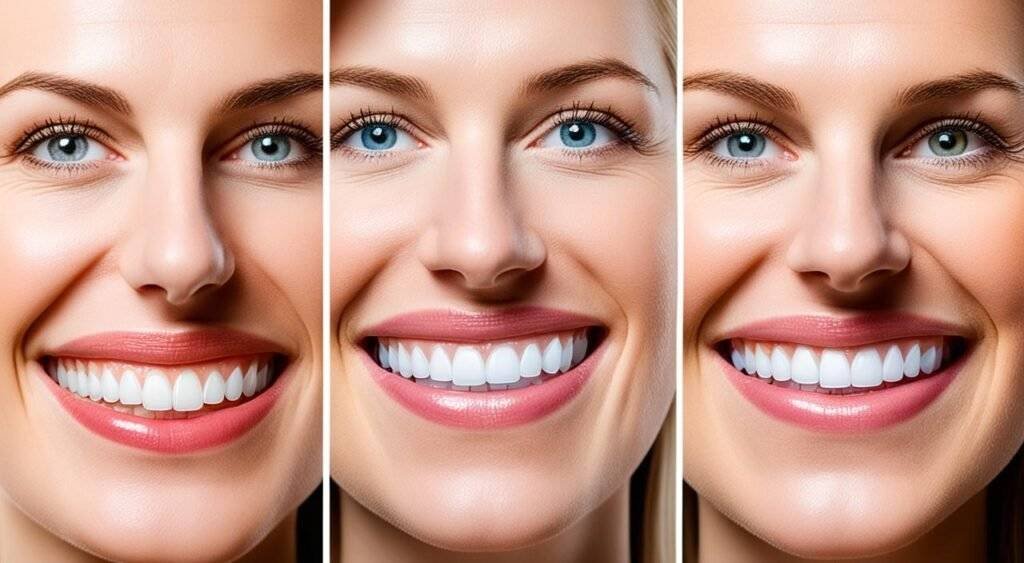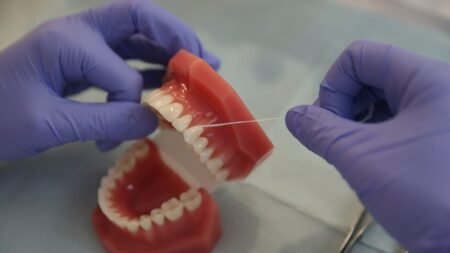Ever wondered why your smile isn’t as bright as you’d like? Many of us focus on oral hygiene but overlook how foods and drinks like red wine and coffee stain our teeth. Tooth enamel is more porous than it seems, trapping stains from our favorite foods and drinks. But what’s the best way to fight these stains and get a best toothpaste whitening without harming your teeth?
It’s key to find a balance between effective tooth whitening and safe teeth whitening. Some toothpastes use up to 10% carbamide peroxide or 3.5% hydrogen peroxide to tackle stains. Others use baking soda or silica to polish teeth. Before starting your whitening journey, let’s explore what makes a toothpaste safe and effective.
Choosing the best whitening toothpaste means balancing a brighter smile with protecting your teeth. We’ve found products for different needs, from Sensodyne Pronamel for sensitive teeth to Colgate Optic White for those on a budget. The goal is to find the right mix of ingredients for your smile.
Key Takeaways
- Selecting a toothpaste that combines effective whitening with enamel safety is crucial.
- Knowing the key ingredients, such as peroxide and hydrated silica, can guide you to the best product.
- Prices for top toothpaste whitening options range from $12 to $18.
- Clinically proven results can be expected, as seen with Crest 3D White Brilliance Toothpaste’s ability to remove up to 95% of surface stains in three days.
- For sensitive teeth, options like Sensodyne Pronamel are designed to whiten while protecting against acid erosion.
- Natural ingredients can be effective but may take longer to see results, as with Tom’s of Maine products.
- Regular dental visits and personalized care are recommended for optimal whitening and oral health.
Understanding How Teeth Staining Occurs
Many people struggle with teeth staining, which can affect how your smile looks. There are many reasons, from what you eat to the natural makeup of your teeth.
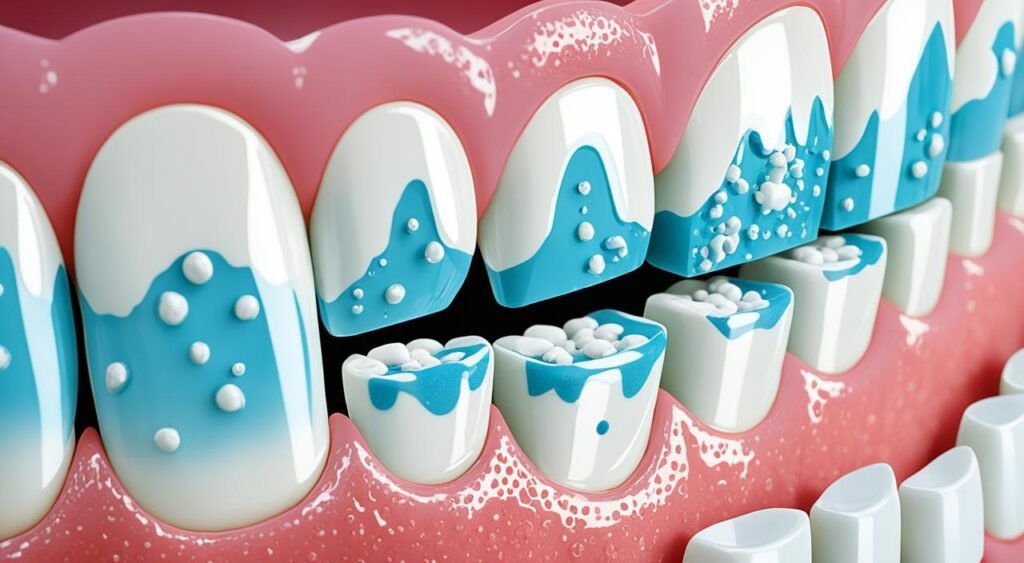
The Impact of Diet on Tooth Color
What you eat and drink can really affect your teeth’s color. Foods like coffee, tea, and red wine are known to stain teeth. They have color pigments that stick to your teeth, making them look stained.
To fight this, try to eat and drink these items less often. Keeping your teeth clean is also key.
Porous Nature of Tooth Enamel
Tooth enamel isn’t just a hard surface. It’s actually quite porous. This means it can trap food and drink colors, leading to stains. These stains can go deep, making your teeth look yellow or brown.
Over time, these stains might need professional help to fix. This could mean whitening treatments or using veneers and crowns to cover up the stains.
Chemical Whitening vs. Physical Abrasion
In the world of oral hygiene, there’s a debate between chemical teeth whitening and physical teeth whitening. Both methods aim to remove stains but work in different ways.
Role of Peroxides in Tooth Whitening
Peroxides, like hydrogen and carbamide peroxide, lead the way in peroxide whitening. These chemicals go deep into the enamel to remove stains. This can make your smile much brighter. Products like the Opalescence Go Kit and Crest 3D Whitestrips use these compounds well. They remove stains not just on the surface but deep within, for a lasting effect.
Abrasive Ingredients and Enamel Safety
Physical teeth whitening uses abrasive substances to scrub away stains, found in some toothpastes like baking soda. This method can be effective for surface stains. But, there’s a risk of enamel abrasion. Using abrasive substances too much can wear down enamel, making teeth more sensitive and prone to decay. So, picking toothpaste safety is key. It’s important to choose products that are gentle yet effective to protect enamel.
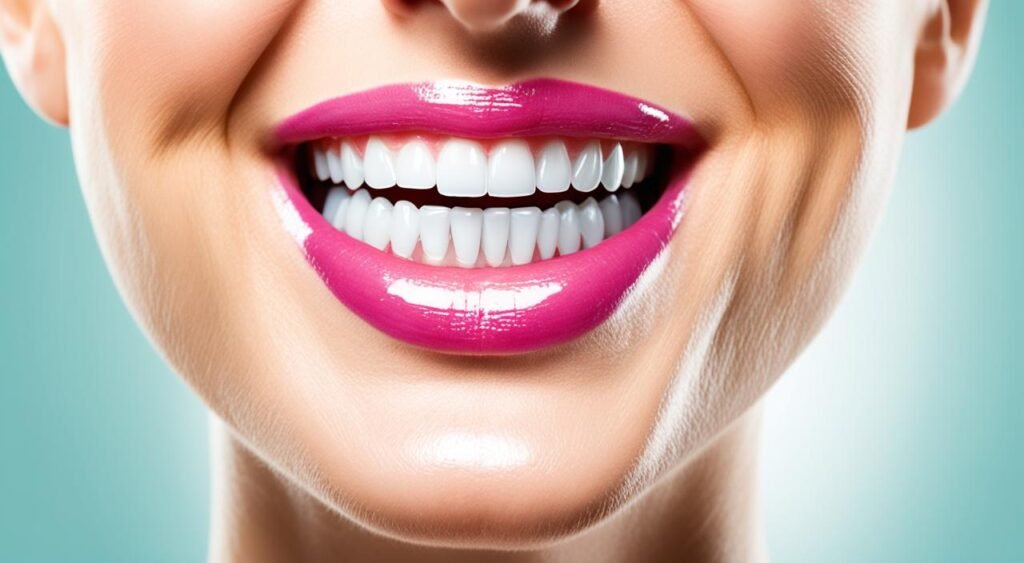
When deciding between chemical and physical whitening, think about your dental health and what you need. Talking to a dental professional can help you find the safest and most effective way to whiten your teeth.
Choosing the Right Toothpaste for Your Smile
With over a million options, finding the perfect toothpaste can seem hard. But, knowing about toothpaste ingredients makes picking whitening toothpaste and dealing with dental sensitivity easier. Here’s how to pick the best effective toothpaste for your teeth.
Ingredients to Look for in a Whitening Toothpaste
For a brighter smile, look for whitening toothpastes with hydrogen peroxide and blue covarine. These help remove stains on your teeth. Also, hydrated silica, calcium carbonate, and sodium bicarbonate gently polish teeth and remove stains without harming enamel.
Sensitivity Considerations When Selecting Toothpaste
If you’re worried about dental sensitivity, choose toothpastes with desensitizing agents like potassium nitrate or stannous fluoride. These ingredients block the nerves from feeling sensations, reducing pain. It’s also good to pick products without harsh abrasives to avoid irritation.
- Fluoride Toothpaste: Key for making tooth enamel strong and preventing cavities.
- Desensitizing Toothpaste: Great for those who feel sensitivity to hot or cold foods.
- Tartar Control Toothpaste: Stops tartar buildup, helping to fight gum disease.
- ADA Seal of Acceptagne Toothpaste: Shows it has passed strict tests for safety and effectiveness.
The American Dental Association (ADA) Seal of Approval is also key. It means the toothpaste ingredients are safe and work well, giving you confidence in your choice.
Choosing the right toothpaste, along with good brushing and a healthy diet, keeps your smile bright and healthy. Whether you need whitening toothpaste or something for dental sensitivity, pick what suits your dental care best.
Top Recommended Best Toothpaste Whitening Formulas
For a radiant smile, picking the right recommended whitening toothpaste is key. This section showcases some top best whitening formulas. They are effective and dentist-approved toothpaste choices for different dental needs.
- Colgate Optic White: It has 2% hydrogen peroxide to fight surface stains safely with regular use.
- Crest 3D White Brilliance: This toothpaste uses stannous fluoride. It whitens teeth and protects against decay.
- Sensodyne Pronamel Gentle Whitening: Great for sensitive teeth, it gently removes stains without adding sensitivity.
- Tom’s of Maine Simply White Natural Toothpaste: For those who prefer natural ingredients, it uses silicas for cleaning and whitening without harsh chemicals.
- Ecodenta Extra Black Whitening Toothpaste: It has charcoal to remove stubborn stains that other pastes can’t.
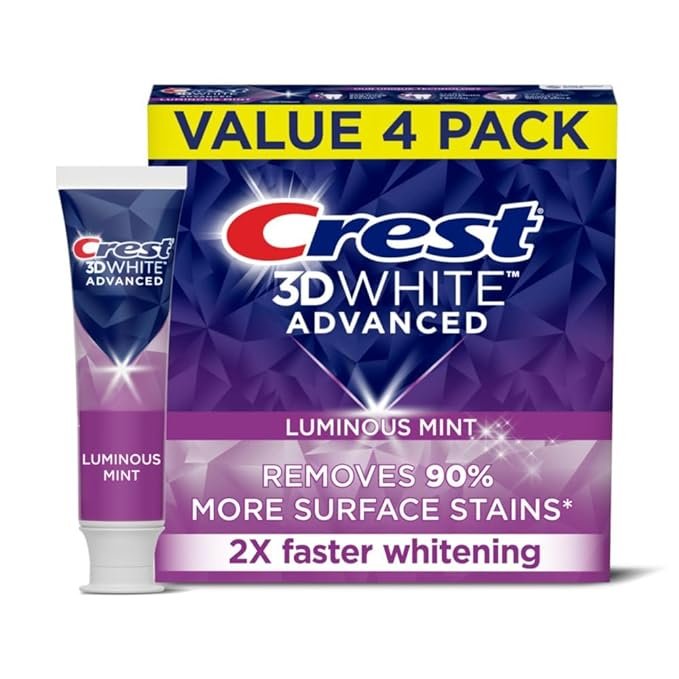
Crest 3D White Toothpaste, Advanced Luminous Mint, Teeth Whitening Toothpaste
Removes 90% More Surface Stains vs. Regular Toothpaste
Choosing the right toothpaste means looking at its whitening power and how it affects your enamel and dental health. Dentist-approved toothpaste ensures a safe and effective oral care routine. Always talk to your dentist to find the best whitening option for you. With many advanced options, getting your perfect smile could be easy!
Additional Oral Hygiene Tips for a Whiter Smile
Getting a whiter smile is more than just picking the right toothpaste. It’s about good oral hygiene and changing your habits. To get a brighter smile, you need to brush every day and think about your lifestyle.
The Importance of Consistent Use and Brushing Techniques
Brushing regularly is key to good oral hygiene. Dentists say to brush twice a day for two minutes with fluoride toothpaste. Using floss or interdental brushes daily also helps keep your teeth white by removing plaque and food bits.
Lifestyle Adjustments to Minimize Staining
What you eat affects your teeth’s color. Drinks like coffee, tea, and red wine can stain teeth. Drinking these through a straw helps reduce tooth contact. Quitting smoking also helps keep your teeth from turning yellow.
Going to the dentist for cleanings helps remove stains better than brushing alone. These visits keep stains away and help you keep a whiter smile. Eating foods that make saliva, like fruits and veggies, can also clean your teeth naturally.
Here’s a quick overview to illustrate the impact of consistent oral hygiene and lifestyle choices on maintaining a whiter smile:
| Action | Impact on Teeth Whitening |
|---|---|
| Brushing twice daily with fluoride whitening toothpaste | Removes surface stains and prevents new stain formation |
| Interdental cleaning daily | Reduces plaque build-up, keeping teeth naturally whiter |
| Avoiding staining foods and drinks | Prevents additional discoloration of the tooth enamel |
| Using a straw for tannin-rich drinks | Minimizes direct contact of staining liquids with teeth |
| Regular professional dental cleanings | Effectively removes tougher surface stains and tartar |
By following these tips and making smart lifestyle changes, you can keep your smile bright and beautiful.
Conclusion
Finding the right toothpaste for a bright smile can feel like a lot to take in. We’ve looked at 125 articles and narrowed it down to 7 key studies for you. This helps clear up the confusion about getting that shiny smile you want.
Your dental health is very important. When picking a toothpaste, think about how it whitens teeth without harming them. A meta-analysis of 4 important studies showed that some toothpastes can make teeth one to two shades lighter. They also looked at how they affect tooth surface and hardness.
This year, toothpaste options like Crest and Cali White showed us different ways to care for our teeth. Remember, the best way to whiten teeth is to take a whole-body approach. Use toothpaste with good dental practices, like flossing with a B. Weiss water flosser.
Professional dental advice is key, especially for tough stains. Keep up with good dental care to keep your smile bright. The right toothpaste works differently for everyone, depending on the stain level. So, brush regularly, make smart choices to avoid stains, and see your dentist often.
This way, your smile will stay bright, strong, and healthy for a long time.
FAQ
What causes tooth discoloration, and how can I enhance my smile?
Foods and drinks like coffee, red wine, and sauces can stain your teeth. This happens because tooth enamel is porous. To brighten your smile, use the best whitening toothpaste that safely removes stains.
How does the porous nature of tooth enamel contribute to stained teeth?
The pores in tooth enamel let pigments from food and drinks get inside. Over time, this causes teeth to look discolored. You need good tooth whitening solutions to fix this.
What’s the difference between chemical teeth whitening and physical teeth whitening?
Chemical whitening uses peroxide to bleach stains from the inside out. Physical whitening scrubs off stains with ingredients like baking soda. Both methods brighten your smile, but use them safely to avoid harm.
Which ingredients should I look for in a whitening toothpaste?
Look for hydrogen peroxide, carbamide peroxide, silica, and sodium bicarbonate in toothpaste. These ingredients help remove stains. If you’re sensitive, choose toothpastes with potassium nitrate or no harsh abrasives.
How can I ensure I’m choosing a toothpaste that’s safe for my enamel while still effectively whitening my teeth?
Pick a toothpaste that balances whitening with enamel protection. Choose formulas with peroxides or mild abrasives. Don’t overuse it to keep your enamel healthy. Ask a dentist for the best option for you.
Can you recommend any dentist-approved toothpaste for whitening?
Yes, try Colgate Optic White, Crest 3D White Brilliance, or Sensodyne Pronamel Gentle Whitening. These are dentist-approved for removing stains and are gentle on sensitive teeth.
How important is consistent use and proper brushing technique for achieving a whiter smile?
Using whitening toothpaste twice a day and brushing correctly is key for a whiter smile. Regular use lets the ingredients work well on stains. Proper brushing removes them effectively.
What lifestyle adjustments can I make to minimize further teeth staining?
Eat fewer pigmented foods and drinks, avoid smoking, and keep up with good oral hygiene. Regular dental cleanings and check-ups also help keep your smile bright.





